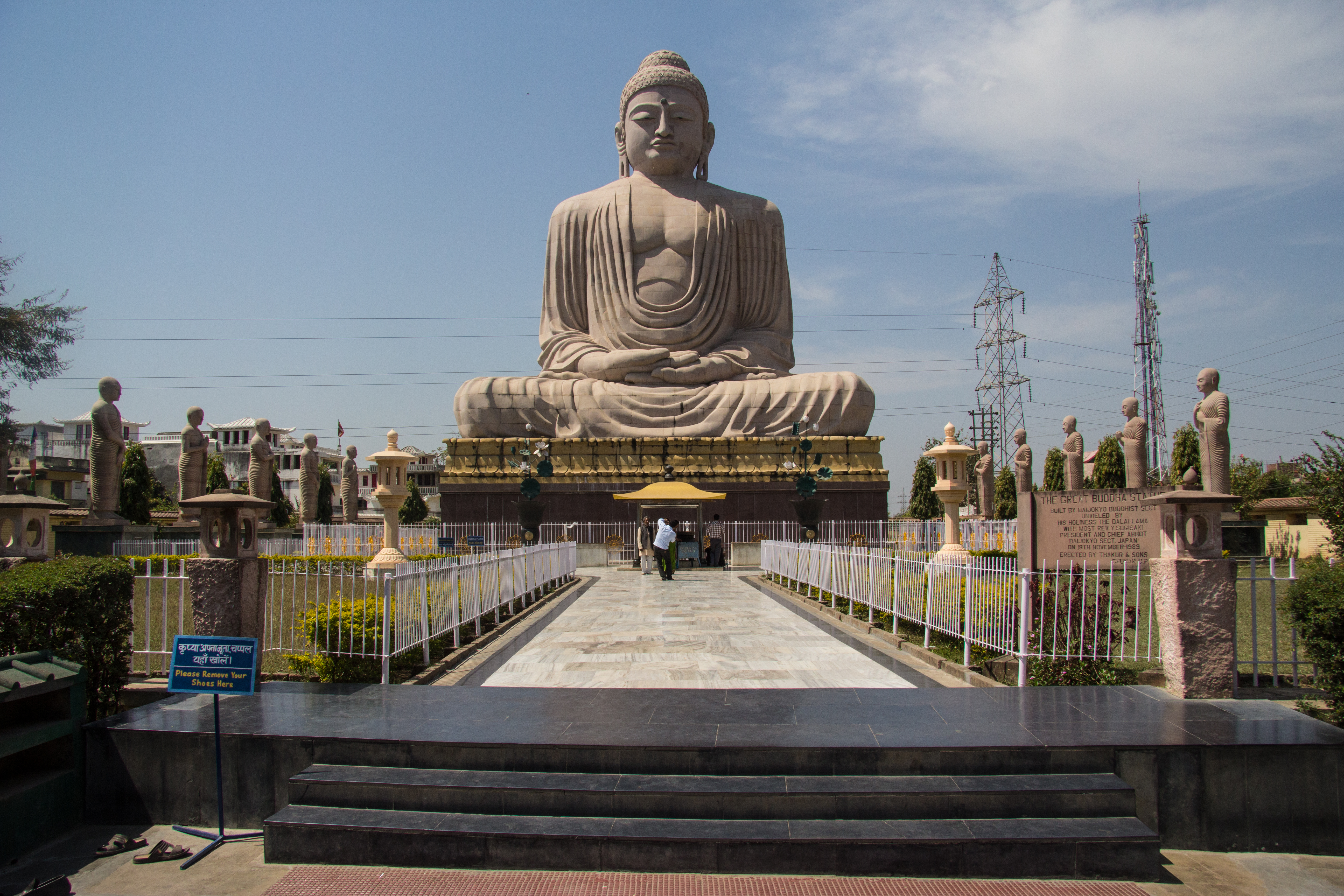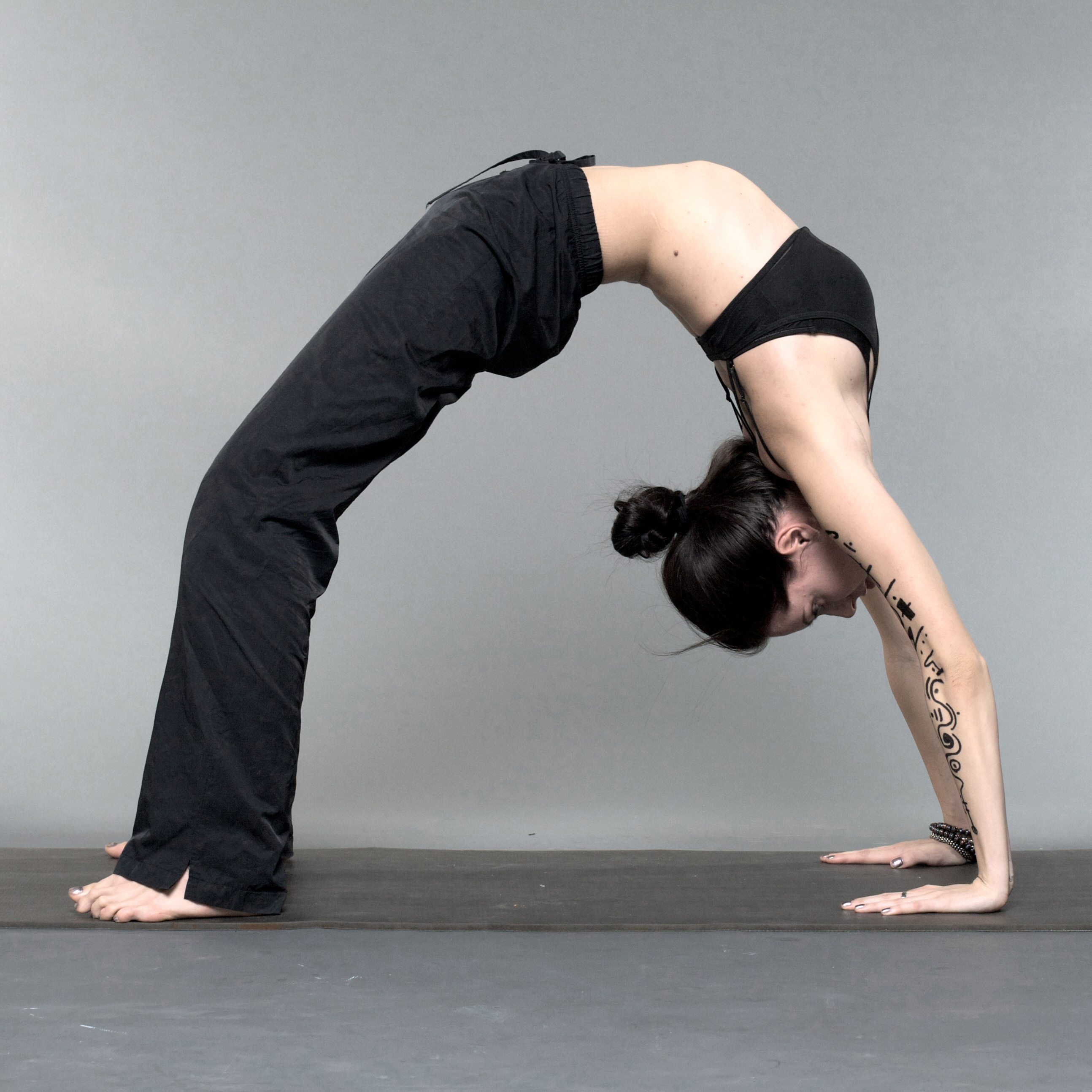 |
| Andrew Moore from Johannesburg, South Africa, CC BY-SA 2.0, via Wikimedia Commons Great Budha Statue, Godh Gaya, India |
What is Tantra Definition of Tantra is given in many scriptures and books of yoga, in various ways and in different words. In simple words, Tantra is a technique that could generate psychic power in our body. Tantra teaches us certain techniques and principles which enable us to experience the unfathomable potential of the human mind and psychic power. This power enables us to experience the ultimate bliss. It also guides how men and women could experience the universe that is beyond ourselves. To feel this cosmic energy, we are required to activate it from its dormant position. Tantra, coupled with yoga poses tries to join the limited energy of humans with the unlimited cosmic energy of the universe.
Kundalini and Chakra . The seeker
of Tantra takes the help of the concept of Kundalini, which is known as the
dormant power embedded into the human body in the form of a female serpent. The
Kundalini travels through seven Chakras. These Chakras are clusters of glands
located in our body parallel to the spinal cord. They are named Muladhara,
Swadhistan, Manipur, Anahat, Visudha, Anja, and the last one is Sahastrar. As
the Kundalini rises with our yogic efforts, the Chakras get activated one by
one.
Mantra Another device used by the Tantric practitioner is the chanting of Mantras.
These are the verses to chant while doing any religious acts or performing
yoga. Tantra seekers would also chant specific verses. The above-mentioned
chakras are envisioned as a lotus having fifty outgoing petals. Each of these
petals represents our desires, instincts and longings for worldly things. The
words and humming of chanting create effects on each of these petals. This
helps in awakening the power of Kundalini. And once the energy awakens and
reaches a particular chakra, the petals are pierced and consciously become clearer and clearer. The energy flows from downward to upward, starting from the
genitals to the head.
Buddhism and Tantra Buddhism also recognizes the
existence of hidden energy in our body. Buddha himself professed the
importance of joining our body with cosmic energy. The mandalas s devised by
Buddhism try to depict the correlation between our individual energy and cosmic
energy. Both the Vedic scriptures and Buddhism believes that Tantra is the
union of three forces: the physical energy of the human body, the cosmic energy
and the ultimate power, the Divine energy.
 |
| UmaPrykhodko, CC BY-SA 4.0, via Wikimedia Commons |
Tantra Yoga It is believed that the corporeal
act has three distinct purposes. To procreate to keep the human race alive,
to feel pleasure while doing the act, and to get liberation. Tantra Yoga deals
with the third object, the liberation of the soul by taking the help of
physical acts done together by a man and a woman in their intimate moments. By
practising Tantra Yoga, one tries to re-integrate with what is beyond our form,
the body. Our awakened mind and upward-going energy would lead us to
the universal energy, the life that is larger than ours. This is done by
practising yoga postures, meditation and Tantric practices.
Tantra is a science. The science
of the human body and the human mind. The Tantric practices enable the human
body to experience the unexperienced within ourselves.
For yoga, the body and the body's desire have never been taboo. Instead, there
are techniques devised by yoga masters, which help us to keep our body healthy and make it stronger. Overall health certainly would raise
the body's power, and resultantly the strength to enjoy the act satisfying bodily
desire also increases.
It has been believed by yoga masters that the health of the human body can also be improved by practising yoga. Tantra Yoga is the branch of Yoga that
deals with the interrelationship between Yoga and Tantra. In our life, what
we lack is experiencing powerful body energy.
Happening of such an intense Tantric experience would stimulate certain glands
and increase the vital power of the body. Tantra Yoga helps in doing so.
Theme: Yoga Asanas and Food. Eat Vegetarian Food for Health
 |
Public domain, via Wikimedia Commons |
Yoga and Diet: Yoga systems do not advise you to starve yourself on the 'bellow the poverty line diet', which is sometimes termed as Hollywood Diet, too. Our food is very much important in shaping the quality of our thoughts.
The yoga system strongly believes
and advocates that our mental development and spiritual uplift are linked with
the food we consume. So there are theories in the Yoga system and Ayurveda, the
ancient system of healing, narrating how the purity of the diet helps us
become peaceful and spiritually aware. There are three types of food.
One is food that makes us unhealthy; the second is food that gives us
nourishment and health. The superfood is the fruit that gives us mental peace.
When you are practising Yoga Asanas, you have decided to have all the benefits available by doing so. Therefore, the diet should be devised in such a way that it augments the benefits of yoga practices. The composition of the diet should be balanced and of a quality vegetarian, as yoga denies any kind of violence. The food that arrived through the process of killing another soul on the earth could not help our wellness; that is what yoga believes.
Here is some information
about vegetarian food that would help to make our body and
mind balanced.
- Vegetables of all kinds (except onion and garlic) and sweet fruits are
essential.
- Grains like wheat, rice and oats must be used, especially not in very much powdered
form.
- Cereals
and all types of milk products, and the natural sugar taken in the form of
Honey and sweet fruit would be better.
- It would
be advisable not to consume non-vegetarian food like meat and seafood.
- A lesser intake of fried and intensely boiled food should be avoided.
- If it is
possible take only the natural substances in your diet and avoid unnatural like processed food and artificial colours.
- These are
general guidelines; you can devise your plate according to your choice and availability.
 |
| MyA, CC BY-SA 3.0, via Wikimedia Commons |
Yoga Retreats in India
Yoga retreats are the centres where you will find residential facilities
with yoga training. In India, you would find various types and
sizes of yoga retreats catering to your needs and desires. Mostly, these
retreats concentrate their attention on the matters of teaching yoga postures,
pranayama, and meditation. Living comfortably is also a part of yoga theory. So
in such retreats, you would find the living comfortable.
India is the founder of the yoga system. From the days of the ancient
universities of Nalanda and Taxila (Taxshila), the knowledge about yoga and
meditation has been imparted here with authentic spiritual dedication. It is
said that silence is the language of God. In a well-managed yoga centre, you
would be able to hear that language, sitting in an atmosphere of peace and
quietness, enabling you to submerge yourself.
In modern-day India, too, the teaching of yoga is continued with the same
dedication with which it was done in ancient times of Aryan saints and
medieval yoga gurus. Many of the retreats emphasize the lifestyle of the ashram
during the sessions of yoga teaching. The people working in such institutes or
facilities are mostly well-trained in the field of yoga poses and meditation.
How Retreats Help Learning Yoga Yoga is known
as the journey of knowing the self; it is like a trip to discover the person
living within ourselves. For travelling within us, we need an exclusive
corner of peace and tranquillity. The yoga retreats situated either on the
hills of the Himalayas or on the tranquil beaches of India would
provide you with the space you need. You would find a nice place around
Rishikesh in northern India or Goa near Bombay. The retreats
situated in Kerala offer a peaceful stay at palm grove beaches. These places
open up the possibilities of experiencing the real peace we can have by doing yoga
and meditation.
What They Provide in Yoga
Retreats Depending upon the situation and the place of the retreat, and the tariffs
they charge, the facilities offered to the yoga participants could be
varied. In most of the retreats, especially near Haridwar and Rishikesh,
the charges would be very economical. Most of the places provide the facilities
of food and beverages at cost prices. They charge some fees for the services of
a trained yoga teacher.
Other Facilities in Yoga
Retreats various places, cater to the different needs of the person. It
includes the services of providing Ayurvedic spas and massages. Those who want
special huts near the seashore or under a palm tree will be required to pay
extra for the same. These resorts provide all types of yoga accessories like yoga mats and yoga balls. You would find a good gym, too, in some of the resorts.
